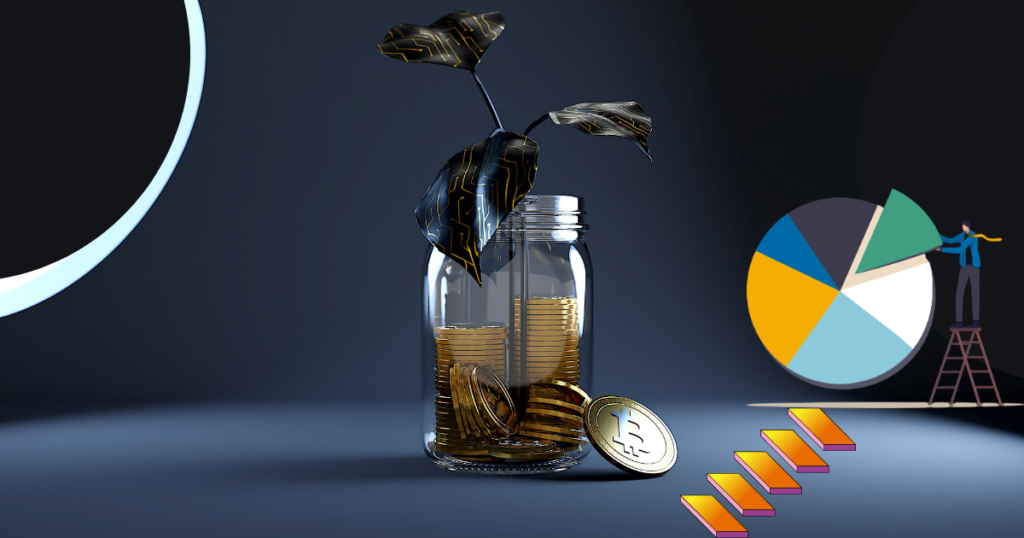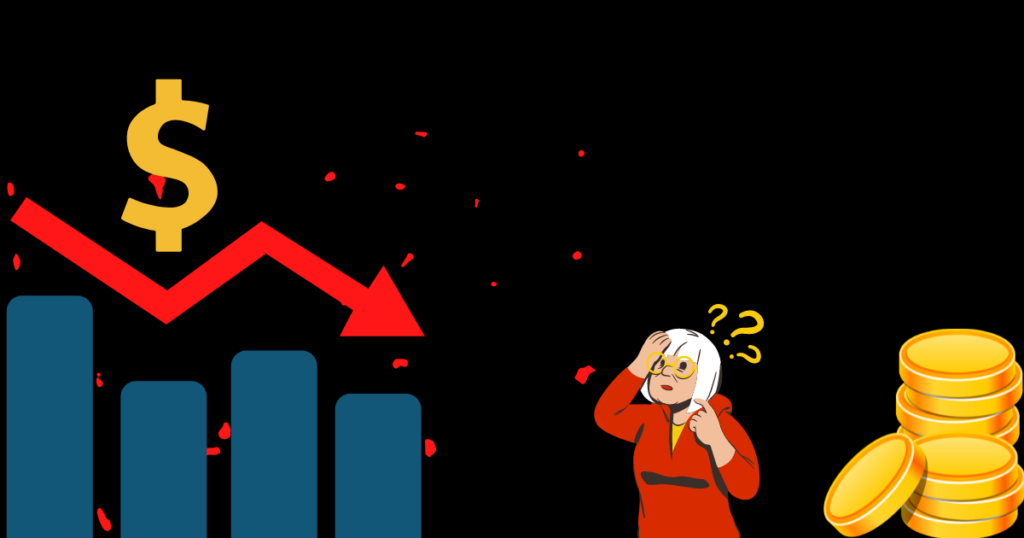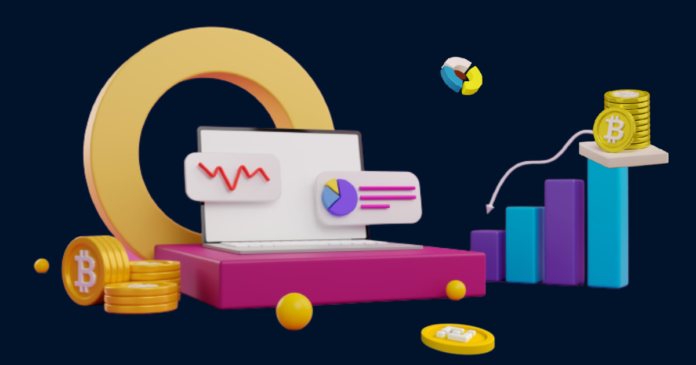When an economy faces high unemployment rates stagnation or negative growth and rising prices this is known as stagflation. Recession and inflation each have techniques to tackle them but stagflation is challenging to manage since they have negative impacts when combined.
In this article, we’ll learn what stagflation is, who invented the term, how it differs from inflation, whether it’s good or bad for cryptocurrencies and my personal opinion.
On one hand, boosting the money supply and making it more affordable for businesses to borrow money can be used to combat economic stagnation or negative growth, such as through lower interest rates. A recession can be efficiently avoided or fought by having more money available, which promotes growth and better employment rates, but on the other hand economists and decision makers frequently attempt to manage growing inflation by slowing the economy. This can be accomplished by increasing interest rates which will increase the cost of borrowing money.
As a result of reduced borrowing and spending by businesses and individuals prices cease to rise. Stagflation on the other hand is when an economy simultaneously has high inflation and a recession. let’s explore stagflation its typical causes and viable remedies.
Stagflation Described
The macroeconomic theory of stagflation was initially introduced in 1965 by British politicians and the chancellor of the ex-checker MacLeod. The term which combines the terms stagnation and inflation refers to an economy with high unemployment, little to no economic growth, and rising consumer prices or inflation. It’s challenging for a government or central bank to deal with stagflation because the conventional economic policies employed to address each situation separately can exacerbate the other.
Stagflation defies the general rule that solid employment and growth rates positively correspond with inflation. A country’s gross domestic product or GDP which is directly correlated with employment rates is frequently used to measure economic growth. Severe stagflation which occurs when inflation rises and GDP is underperforming might trigger a broader financial crisis.
Inflation vs stagflation
As we’ve seen stagflation results from inflation and slow negative economic development, although there are many ways to describe inflation it frequently refers to a rise in the cost of goods and services. Another way to think of inflation is a currency’s purchasing power declining.
What causes stagflation?
Simply put stagflation happens when the economy slows down and the quantity of goods and services declines, at the same time that the purchasing power of money falls. Depending on the historical setting and the various economic philosophies several causes of stagflation exist. The monetarist Keynesian and new classical models are just a few of the ideas and viewpoints that provide various explanations for stagflation.
Monetary and fiscal policy
Monetary and fiscal policy are at odds the money supply is controlled by central banks like the u.s federal reserve to influence the economy. Monetary policy is the name given to these restraints. Government fiscal policy which includes spending and taxing decisions also directly impacts the economy, however a conflicting budgetary and monetary policy mix can result in out-of-control inflation and sluggish economic expansion.
Stagflation might eventually result from any combination of policies that lower consumer spending while raising the money supply. For instance, a government might increase taxes leaving its citizens with less disposable income. The central bank may simultaneously be lowering interest rates or engaging in quantitative easing often known as printing money. While the central bank expands the money supply which frequently causes inflation the government’s policies will hurt growth.
Related: 5 Important Crypto Tax Tips | Crypto Tax Explained
Creation of fiat money

In the past, most of the world’s significant economies tied their currencies to gold reserves. The gold standard was a system that was extensively abandoned after world war II. Any restrictions on the money supply were eliminated with the demise of the gold standard and the introduction of fiat money. While this might make it easier for central banks to manage the economy it also risks hurting inflation and driving up prices.
Supply cost increases
Stagflation may also result from a substantial rise in the cost of producing goods and services. A supply shock is used to describe the relationship, particularly for energy. Increased energy costs often caused by rising oil prices are also bad for consumers.
Stagflation is more likely to happen if things are more expensive to produce, prices increase and consumers have less disposable money because of the cost of transportation heating, and other energy-related expenses.
How can Stagflation be stopped?
Monetary and fiscal policies are used to combat stagflation. The precise measures implemented however depend on the economic school of thought.
Monetarists
According to monetarists or economists who believe managing the money, and supply is the most important thing to be controlled inflation is the most crucial aspect. A monetarist would in this case first cut back on the money supply, which would then come back on overall spending. As a result, there’s less demand which drives down the cost of goods and services the disadvantage of the strategy is that it does not promote growth. Later fiscal and loose monetary policy would need to address change. Economists working on the supply side increasing supply in the economy via lowering prices and boosting efficiency is another school of thought. Energy price regulations if feasible, efficiency improvements, and production subsidies will all reduce costs and increase overall supply in the economy. Consumer prices are lowered as a result and the economy is stimulated which also lowers unemployment.
Free market approach
Some economists contend that letting the free market handle stagflation is the best action, ultimately supply and demand control price increases as customers struggle to pay for goods. This fact will cause demand to decline and inflation to decline. Additionally, a free market will effectively distribute labor and lower unemployment however it might take years or decades for this plan to be implemented effectively. Leaving the populace in adverse living conditions in the long run we’re all dead economist Keynes once said.
How does Stagflation impact the cryptocurrency market?
It’s challenging to accurately characterize the precise consequences of stagflation on cryptocurrency. However, if we assume that other market conditions remain unchanged we can make certain fundamental assumptions, negative or little growth.
Income levels stagnate or even decline due to an economy that is either hardly expanding or contracting. Customers’ investment capital is lower in this scenario because retail investors need access to funds for daily necessities. This could result in a decrease in crypto purchases and an increase in sales. Due to the slow or negative economic development, large investors are encouraged to limit their exposure to higher-risk assets such as equities and cryptocurrencies.
Governmental actions to combat Stagflation
A government will often attempt to manage inflation first before addressing growth and unemployment issues. Raising interest rates is one way to reduce the money supply and prevent inflation. People retain their money in banks which limits liquidity and raises the cost of borrowing, high-risk high-return investments become less tempting as rates increase.
Because of this cryptocurrencies may experience a decline in demand and price during times of higher interest rates and less money in circulation. Once inflation is under control a government will probably wish to promote growth. Usually, this is accomplished by interest rate reductions and quantitative easing. Due to the increase in the money supply, this situation will probably have favorable consequences for the cryptocurrency markets.
Increased inflation

Many investors argue that bitcoin can serve as a reliable inflation hedge. Maintaining your wealth in fiat without generating interest decreases its value due to increased and growing inflation.
Many have resorted to using bitcoin to avoid this preserving their long-term purchasing power and even making money. Due to its restricted issuance and supply, investors view bitcoin as a reliable store of value. This hedging tactic may have historically been successful for investors who accumulated bitcoin and other cryptocurrencies over time, especially during or following periods of economic expansion and inflation.
In contrast, utilizing cryptocurrency as a hedge against inflation might not be the best strategy during shorter periods, mainly when stagflation is present. It’s important to remember that there are additional forces at work such as the growing link between cryptocurrencies and stock markets.
Related: Crypto vs Stocks: Difference Explained
1973’s stagflation during the oil crisis. An oil embargo was imposed on a select group of nations in 1973 by the organization of Arab petroleum exporting countries or OPEC. This choice was made in response to backing Israel during the Yom Kippur conflict. Oil prices increased due to a sharp decline in oil production, which resulted in shortages in the supply chain and higher consumer prices. The rate of inflation increased significantly as a result of this. Central banks in the united states and the united kingdom lowered interest rates to promote economic expansion.
Lower interest rates make borrowing money more affordable and encourage spending rather than saving. However, boosting interest rates and enticing consumers to save their money are conventional methods of limiting inflation. As a result of oil and energy expenses accounting for a significant portion of consumer spending and interest rate cuts failing to stimulate adequate growth many western economies have experienced high inflation and stagnating economies.
Conclusion
What are my thoughts? Due to the unusual combination of inflation and negative growth known as stagflation economists and decision-makers face a challenging predicament. While controlling inflation can result in slow or negative economic growth methods to overcome stagnation frequently produce inflation. Therefore in stagflationary times, it’s essential to consider the macroeconomic backdrop and its various components including the money supply, interest rates, supply and demand, and employment rate.
As always I hope you got value from this article, so I’m curious how you feel the economy is doing. Do you think things will get better or worse over the next 12 to 18 months? Leave a comment below.

